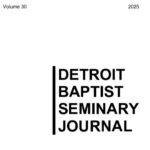The Genre of the Psalms
 An aid in reading the Psalms is to be able to arrange them in literary categories or genres. Based on thematic elements that are shared between psalms and literary features, we can more precisely classify the lyric poems of the Psalms. While some of the following literary categories may overlap as well as the rubrics for each may differ with varying sources, it is possible to place the psalms into six basic genres. Today we will briefly examine the first three of these.
An aid in reading the Psalms is to be able to arrange them in literary categories or genres. Based on thematic elements that are shared between psalms and literary features, we can more precisely classify the lyric poems of the Psalms. While some of the following literary categories may overlap as well as the rubrics for each may differ with varying sources, it is possible to place the psalms into six basic genres. Today we will briefly examine the first three of these.
1. Lament is the most dominant genre found in the Psalter. More than one-third of the psalms are of this nature. The dominant defining character of the lament is its mood. In this type of psalm, a psalmist will often be mourning about the attack of his enemies. At other times, a psalmist may make a complaint about himself and, at times, he expresses disappointment with God (Ps 22:1–2). In addition, lament psalms move from mourning to expressing trust in God.
A problem often encountered in laments is that the enemy is described in vague terms. We need to avoid becoming too specific in our identification of the enemies. Some commentators have gone to extremes in identifying the enemy. Unless the context is clear, we should avoid this extreme because the psalmist generally wanted to be vague in identifying the specifics of a historical situation. As Longman has stated: “In most cases the references are vague, and we have every reason to believe they are so intentionally. The psalms are purposefully vague in reference to historical events so that they can be used in a variety of situations” (How to Read the Psalms, 27).
The lament psalm may be written from an individual or national perspective. Psalm 3 is as an individual lament highlighting what took place when David fled from Absalom. An element of trust concludes this psalm in vv. 7–8 (other examples include Pss 4, 5, 6, 7, 9, and others). Psalm 12 is a national lament composed on behalf of Israel. David laments the oppression of Israel by their enemies. An expression of trust is found in v. 7 where a prayer for deliverance is offered (so also Pss 44, 58, 60, and others). The lament also includes the penitential psalms such as Psalm 51 (also Pss 6, 38, 102, 130, 143) and psalms with imprecatory elements such as Psalm 137 (also Pss 12, 35, 58, 59, 69, 70, 109, 140).
2. Praise hymns are easily identifiable because of their emphasis on praise to God. With the lament, the psalmist is at the lower end of the emotional spectrum, but with the hymn he moves to the opposite end of joyful praise. God is praised for his greatness and goodness. He may be praised as Creator as in Psalms 8, 19, 29, 104, 148, as deliverer of Israel in 66, 100, 111, 114, 148, and as the Lord of history in 33, 103, 113, 117, 145, 146, 147 (Fee and Stuart, How to Read the Bible, 213). Another type of hymn is the Songs of Zion. In these psalms God is extolled for having made Mount Zion the place where his presence would be uniquely manifested (Pss 46, 48, 76, 84, 87, 122).
3. Thanksgiving psalms are joyful expressions of thanksgiving. The dominant feature is an expression of gratitude to the LORD for having responded to a request of an individual or a group (Longman, Psalms, 30–31). An individual psalm of thanksgiving is found in Psalm 32 (also Pss 18, 30, 34, 40, 66, 92, 116, 118, 138). In this psalm David thanks the LORD for forgiving him of his sin that involved his adultery with Bathsheba and responsibility for the murder of her husband. His prayer for forgiveness is found in his penitential lament in Psalm 51. A national psalm of thanksgiving is found in Psalm 124. Israel expresses gratitude to the LORD for delivering them from an impending destruction (other examples include Pss 65, 67, 75, 107, 136).
Tomorrow I will cover the last three genres.


